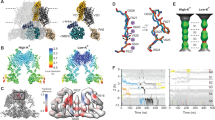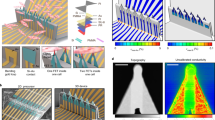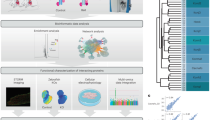Abstract
The antiarrhythmic clofilium is an efficient blocker of hERG1 potassium channels that are strongly expressed in the heart. Therefore, derivatives of clofilium that emit positrons might be useful tools for monitoring hERG1 channels in vivo. Fluoroclofilium (F-clofilium) was synthesized and its channel-blocking properties were determined for hERG1 and hEAG1 channels expressed in HEK 293 cells and in Xenopus oocytes. When applied extracellularly in the whole-cell patch-clamp configuration, F-cloflium exhibited a slower onset of block when compared with clofilium, presumably owing to its lower membrane permeability. When applied in the inside-out configuration at the intracellular membrane side, it blocked hEAG1 channels almost as efficiently as clofilium (IC50 1.37 nM and 0.83 nM, respectively). Similar results were obtained for hERG1, showing Fclofilium is a potent hERG1 and hEAG1 channel blocker once it has reached the intracellularly accessible target site at the channel. Using the 18F-labeled analog we studied the in vivo binding and distribution of F-clofilium in mice and a dog. Greatest activity was found in kidneys and bones. A small but significant enrichment of activity in the dog myocardium known for its expression of cERG1 channels allowed to depict the myocardium of a living dog by PET. Thus, F-clofilium is a useful tool for imaging hERG channels in living organisms.
Similar content being viewed by others
Article PDF
Author information
Authors and Affiliations
Rights and permissions
This is an Open Access article distributed under the terms of the Creative Commons Attribution Non-Commercial License (http://creativecommons.org/licenses/by-nc/3.0/) which permits unrestricted non-commercial use, distribution, and reproduction in any medium, provided the original work is properly cited.
About this article
Cite this article
Kim, S., Yang, S., Ahn, BJ. et al. In vivo targeting of ERG potassium channels in mice and dogs by a positron-emitting analogue of fluoroclofilium. Exp Mol Med 37, 269–275 (2005). https://doi.org/10.1038/emm.2005.36
Published:
Issue date:
DOI: https://doi.org/10.1038/emm.2005.36
Keywords
This article is cited by
-
Molecular imaging to predict ventricular arrhythmia in heart failure
Journal of Nuclear Cardiology (2014)
-
Novel and Simple Carbon-11-Labeled Ammonium Salts as PET Agents for Myocardial Perfusion Imaging
Molecular Imaging and Biology (2011)



